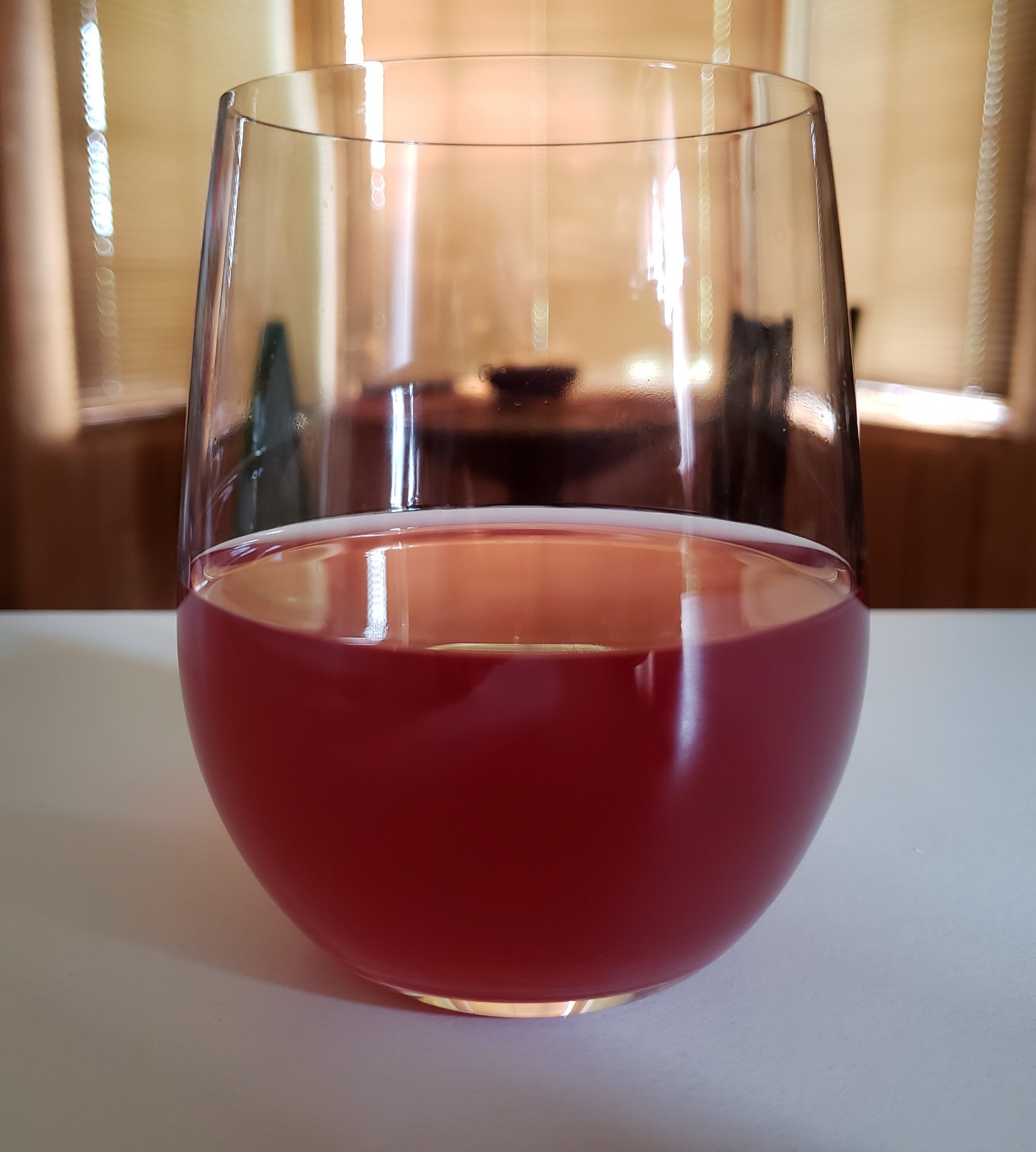
Do you like Concord grapes? I do…they remind me of being a kid and picking them from the old vines that grew in my backyard. The plump globes burst when bitten into, the skin slightly tart but balanced by the delightful sweetness of the flesh inside. Concord grapes evoke memories of summer, even when it’s not…and a wine that could capture the flavor would have to be amazing!
Though I no longer have Concord grapes growing in my yard, I was able to purchase some unsweetened Concord grape juice for the express purpose of making wine. If the fresh grapes are delicious, surely the wine would be, too!
Using fruit juice streamlines the winemaking process, but it almost feels like cheating. It’s important to only use unsweetened/no sugar added, preservative-free (though ascorbic acid is fine) 100% juice. I basically just poured the fruit juice, sugar, water, acid blend, pectic enzyme, nutrient, and potassium metabisulfite (Campden tablet, crushed) into the 2 gallon primary fermenter and let it sit for 24 hours. The Campden tablet kills bacteria and prevents the growth of wild yeast in the mix so that the wine yeast, added (or “pitched”) the next day can do its work without microbial contamination.
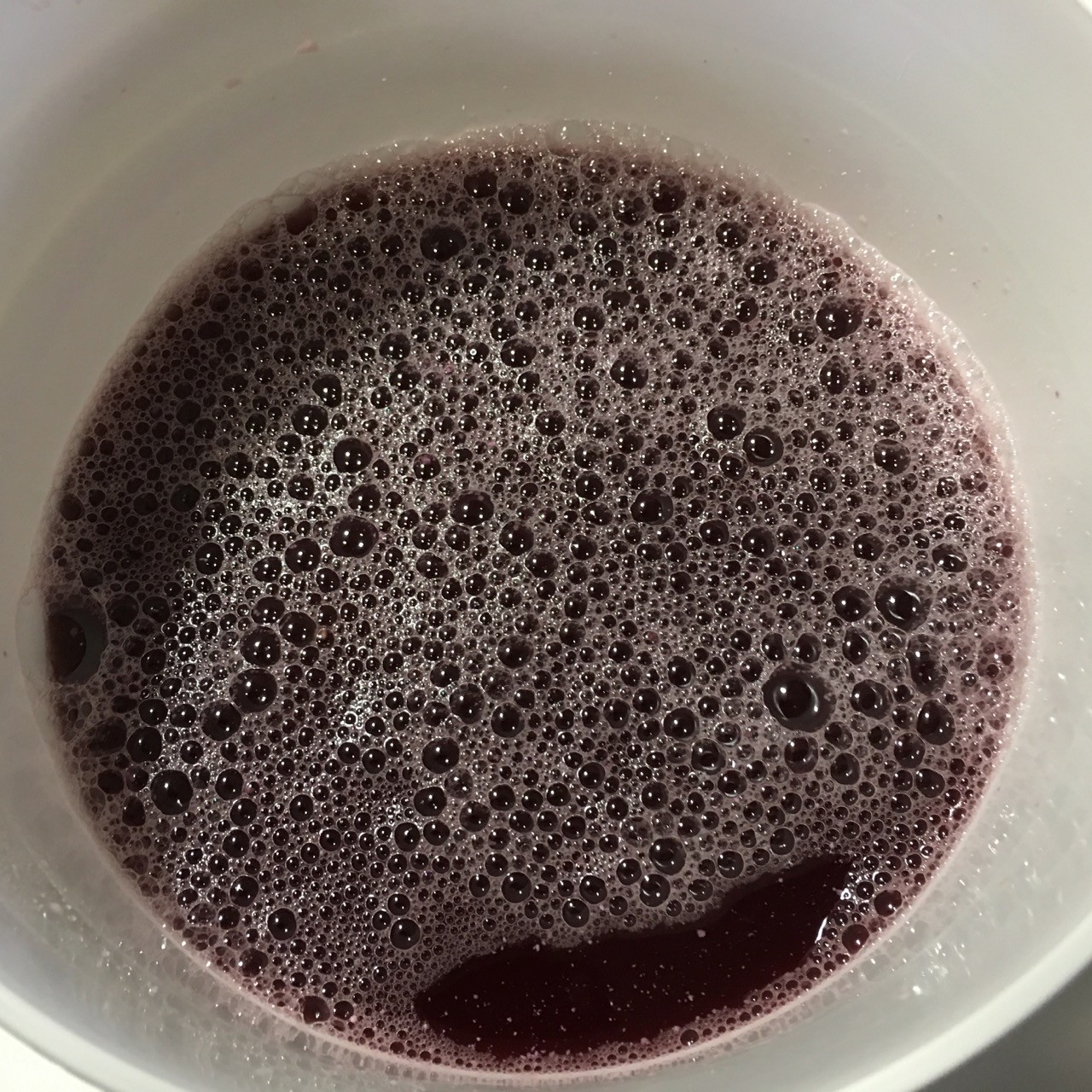
Once the wine yeast starts working, the liquid will begin to bubble in the fermentor. For this batch, I used yeast slurry (the sediment at the bottom of the fermenter after the wine is siphoned off) just to see how well it would work. Slurry contains live yeast, but can apparently also create “off” flavors in wine. I figured it was either recycle the yeast for wine or feed it – since it’s very nutritious – to the fowl (don’t worry, the fowl will be getting some from other batches!). One difference I noticed in using the slurry is the sheer amount of foam it created – far more than with the dry yeast. It was definitely active.
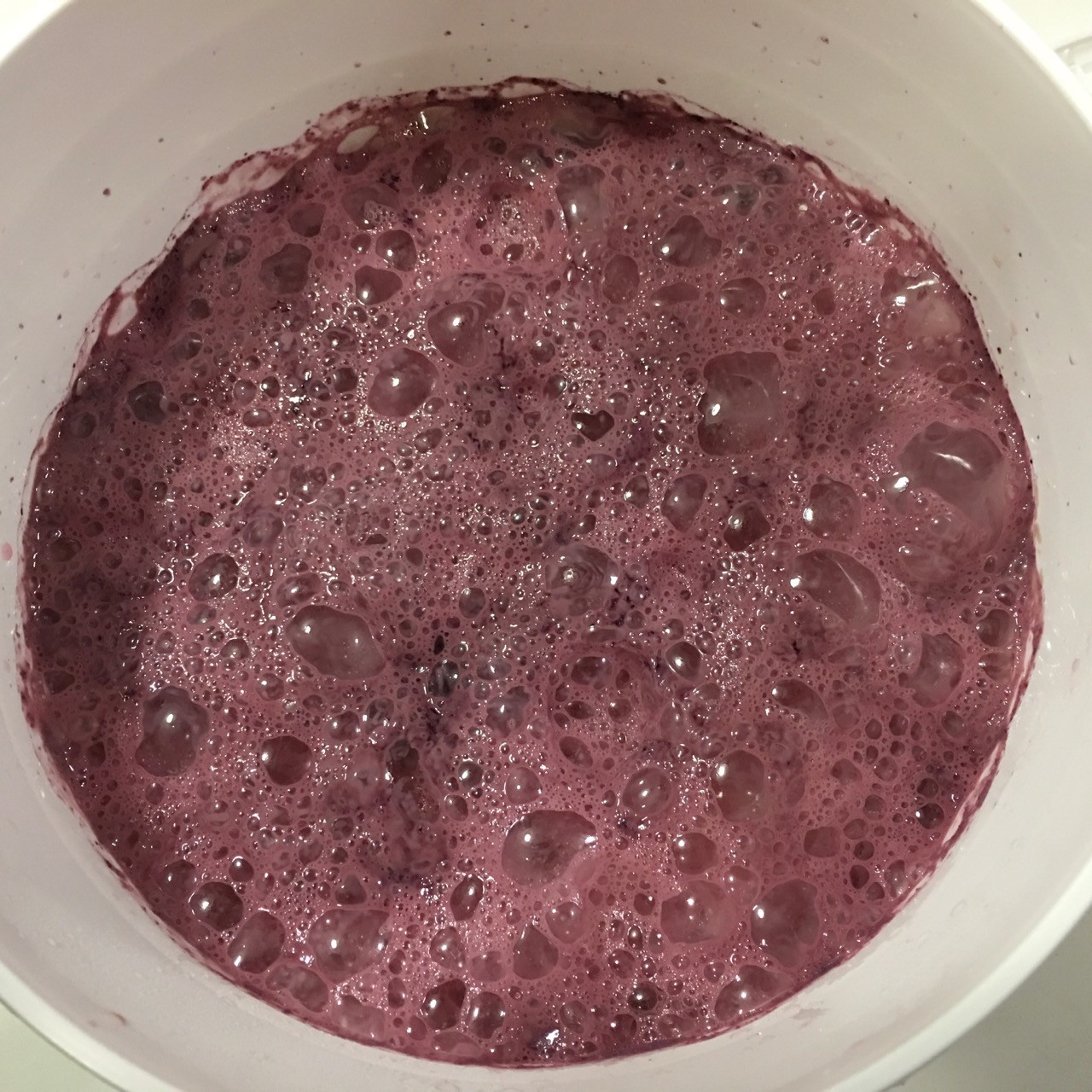
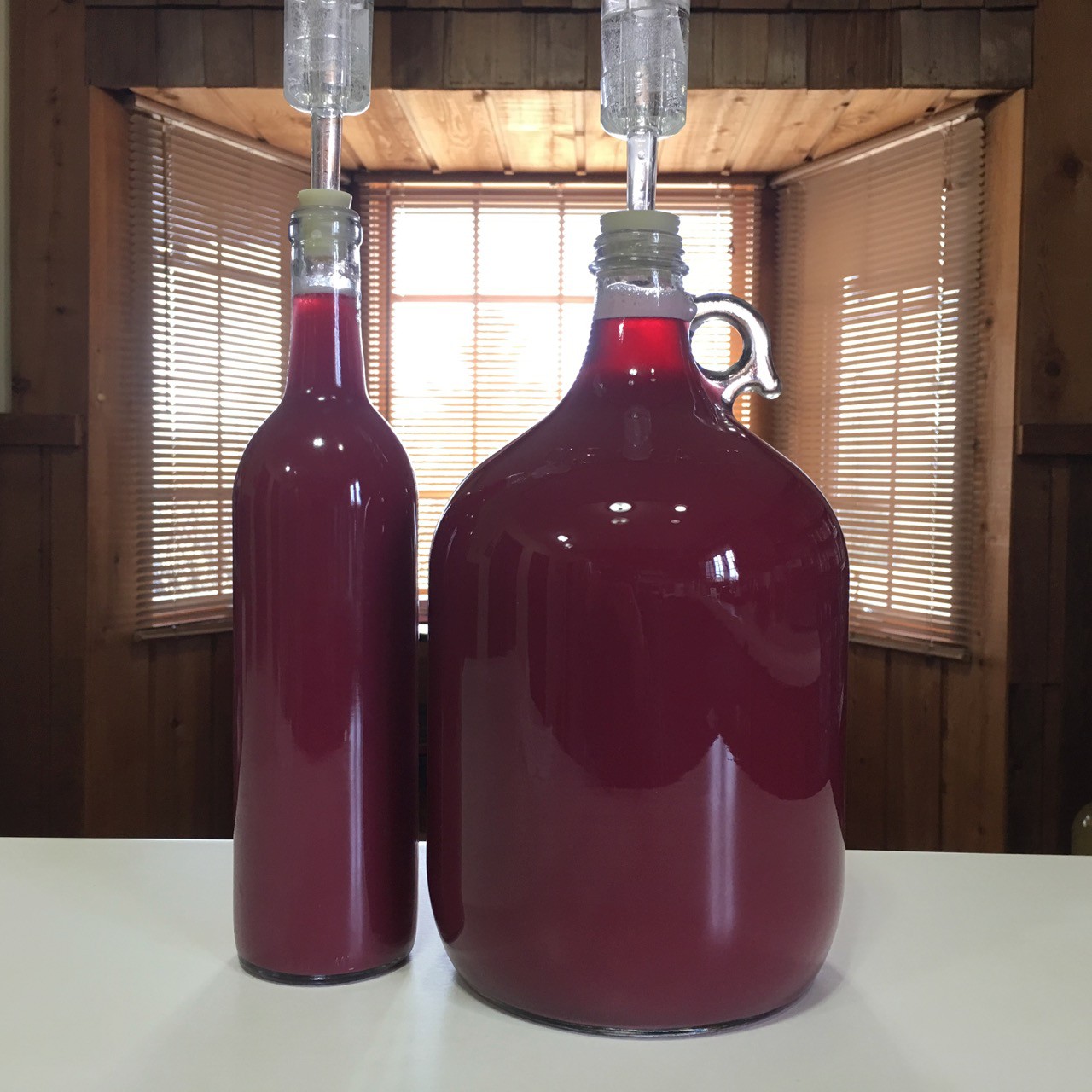
Making wine from juice is an easy way to start making wine, and many types of juice may be used to make tasty wines, like apple, pineapple, cranberry, etc. Three pints of Concord grape juice were needed to make this “tablewine”; the bottle contained four pints, so I was able to use some in kombucha tea and water kefir, too…it seriously tastes like the best (probiotic) grape soda ever!! At roughly $3 a bottle, the Concord grape juice is inexpensive, and will make approximately 5 bottles of wine per gallon, so it’s very economical. Most importantly, I control the ingredients and method.
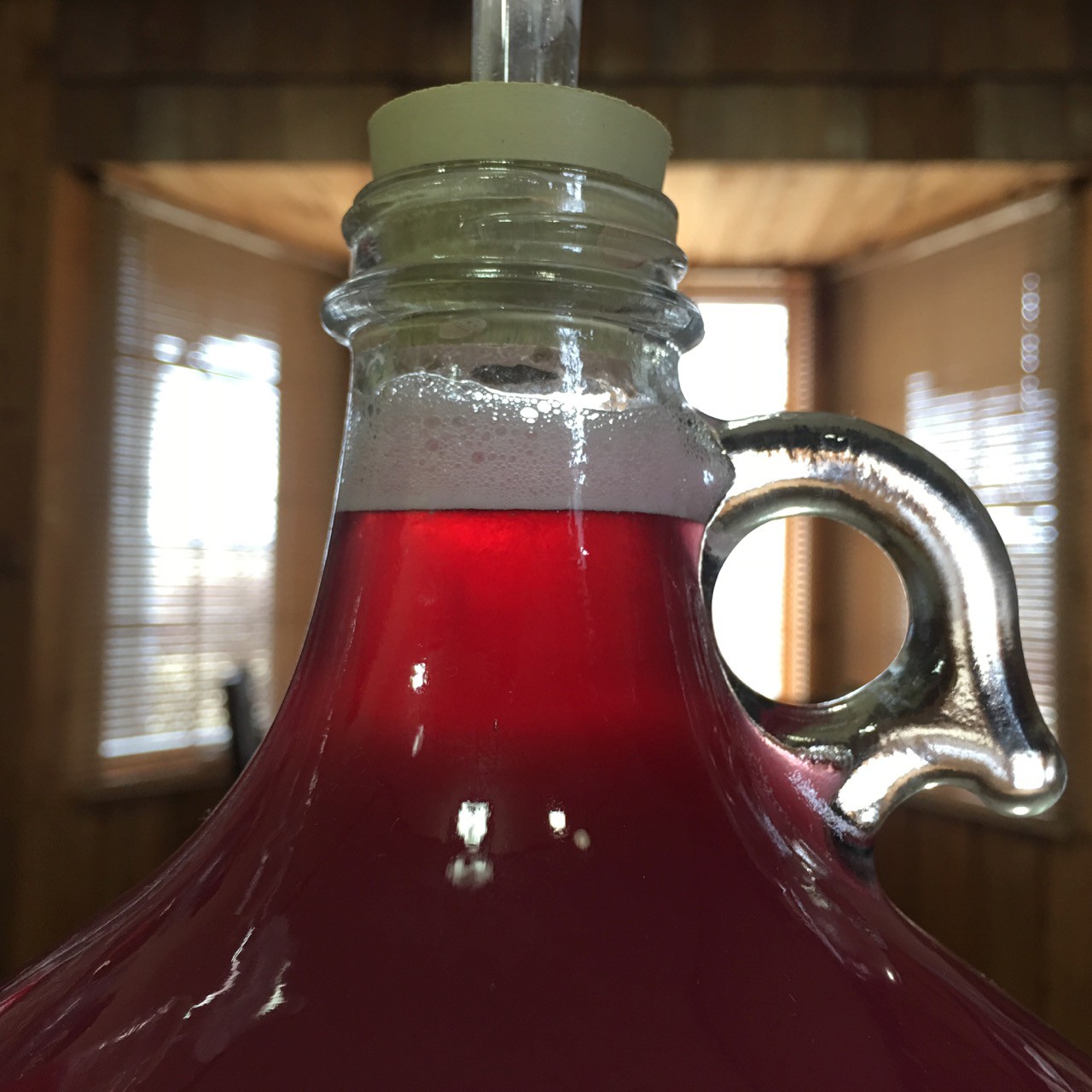
Update: it’s been a few months now since we started the Concord Grape wine, and we’ve had the opportunity to sample it while racking it into a clean carboy. I’m not going to mince words: it’s fantastic! It’s juicy and semisweet without being syrupy, and is full-bodied. This is definitely not boozy grape juice, though there is an assertive, fresh Concord grape flavor present. This is a luscious, delightful wine and we’ll definitely be making it again. A winner!
